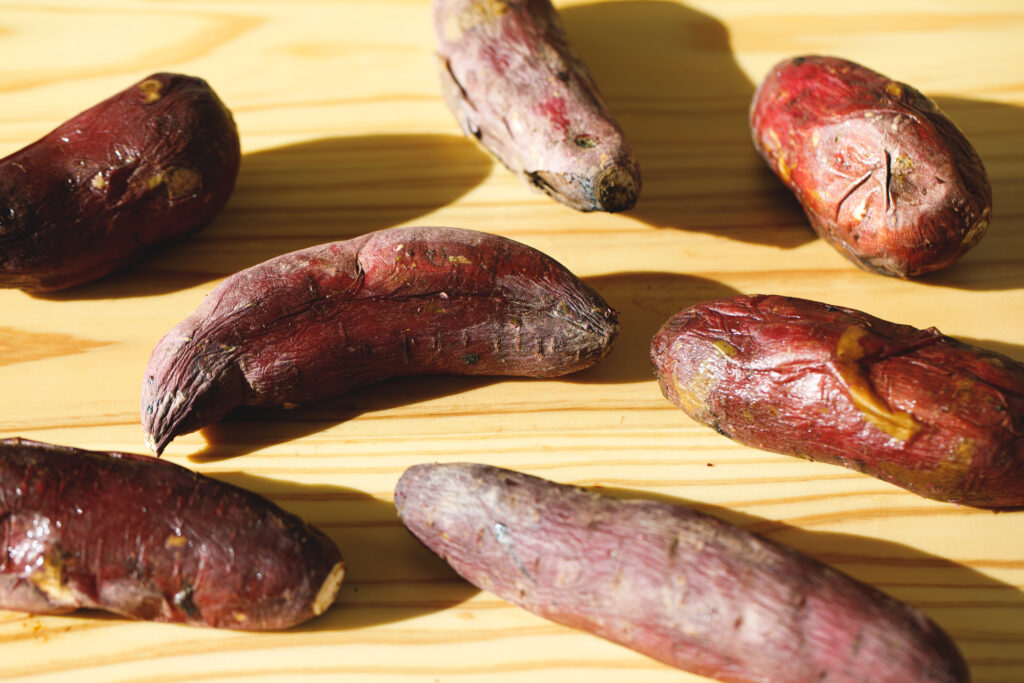About
Beyond sweetness potato, it's Beni-haruka.
Japanese Sweet Potato History
Sweet potatoes were introduced to Kagoshima, Japan in the 1600s, and have been a staple food in Japanese life ever since. In Japan, sweet potatoes are called Satsumaimo: Satsuma is the old name for Kagoshima from the Edo Period, and Imo means potato, so they are literally “potatoes from Satsuma.” Aside from being a key ingredient in many meals and sweet treats, sweet potatoes can also be processed to make products like shochu (Sweet potato based distilled spirits) and starch. They are hardy crops, able to tolerate weather changes like storms, wind, and heat, and they don’t require large amounts of fertilizer to grow. This has made them a great crop to help combat food shortage in the past.


Why Kagoshima?
Located roughly 1400km south of Tokyo, Kagoshima Prefecture produces 37% of Japan’s sweet potatoes, making it the center of Japan’s sweet potato industry. The growing conditions in Kagoshima are excellent, due in large part to the active Sakurajima volcano nearby. Sakurajima’s volcanic ash helps the soil drain and makes it rich in minerals, both of which are ideal for growing sweet potatoes.
Features of Beni Haruka
Beniharuka was born in 2010 through crossbreeding existing sweet potato varieties to emphasize their best characteristics. It can be harvested about 130 days after planting, usually in late April and early May. After the harvest, it is aged to maximize its natural sweetness, rich flavor, and creamy texture that people from all over the world can enjoy.
